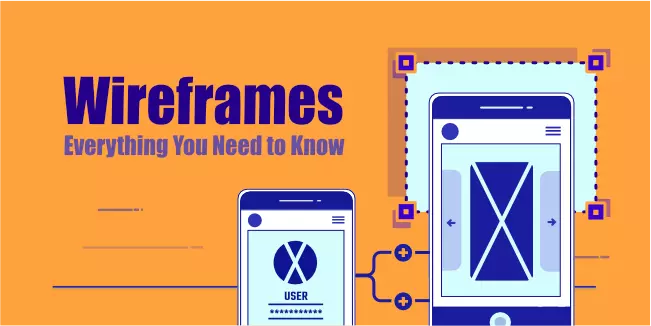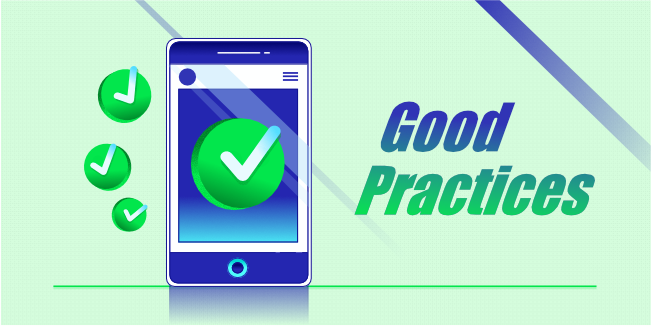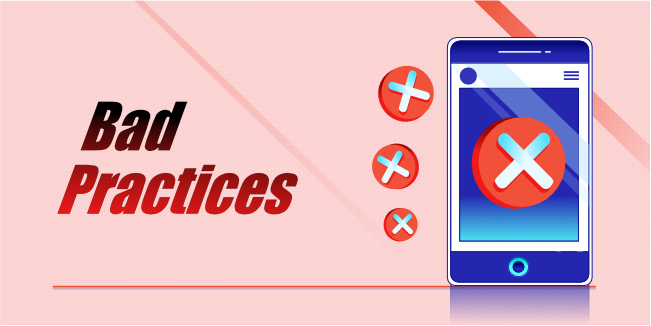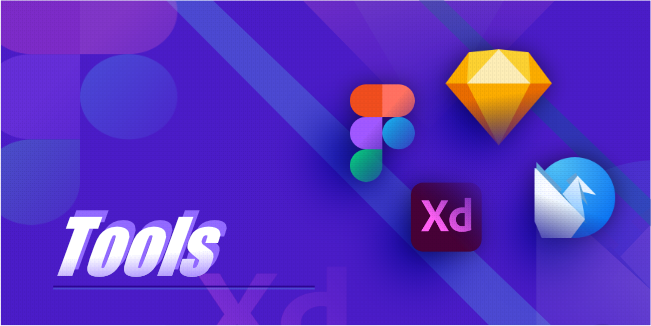Mobile Development
Technologies
Everything You Need to Know About Mobile App Wireframing

Creating a mobile application is a long process. Many things can go wrong when building your project, so it's worth using mockups and sketches.
Thanks to them, we can test the product's functionality without waiting for the entire set to be created. That is why many mobile app developers begin by using a mobile app wireframing or mockup tool.
Using mobile app wireframes can help save time and money and may also aid in the development process by keeping developers focused on the user experience.
What is Mobile App Wireframing?
Wireframes are the foundation of every project, and mobile app design is no exception. Wireframes fill a role between low-fidelity sketches and early interactive prototypes. The wireframing process for mobile differs significantly from one project to the next.
A wireframe isn't meant to be a complete representation of the app's visual design. A wireframe is just a graphical depiction of crucial screens and interface components. The app owner and development team can use a wireframe to define and clarify the overall project's trajectory and scope.
A wireframe is not a high-fidelity graphic design with detailed design components such as logos and font specifications until later. It resembles an architectural plan or schematic diagram rather than a high-fidelity graphic design.
Its simplicity allows designers, developers, and production teams to collaborate without incurring significant development or implementation costs.
Creating Wireframes in Mobile App Development
It's critical to understand that product design is a multi-step process, and wireframing mobile apps should not be the first step in the process. It's crucial to conduct user research before developing wireframes. Wireframing will rely on qualitative and quantitative research data as a reference.
Map Out a Target User Flow
You'll need to have a clear idea of how many screens you'll need to design and how users will interact with them before beginning wireframing. It's much simpler to understand this when you have a real tangible user flow to work with.
A user flow is a person's steps to achieve a certain aim. The user goal is an essential component of user flow. A user may go down several pathways to reach a particular objective. As a result, user flows are not always straight lines.
You'll need to organize and define your user flows before you begin laying out wireframes. It will help you understand what designs you'll require and how they should be linked.
Prepare Your Core
After you've created the user flow, it's time to begin the design process. It may be tempting to utilize a digital prototyping tool for this, but doing so is not recommended. This stage aims to let your creativity run wild and explore numerous UI elements' design paths. In many situations, sketching on paper or using a digital sketching program works best.
Sketches allow you to rapidly develop ideas and share them with other folks, get feedback, and modify it as needed. Always try to think about the user's perspective while sketching and consider what a user would want from a given product. The objective of someone using an app that delivers food is to receive tasty meals as soon on-demand as possible.
Here you need to include the most critical sections of what you want to create. For many mobile applications, these are:
- Search Bar
- Main Content
- Menu
- Tab Bar
Making a Wireframes
The sketches you create will serve as the basis for your wireframes. Creating wireframes is a delicate art; you'll want to do it well. Mid-fidelity wireframes are ideal for communicating with the other designers and developers during the planning stages.
Now it's an excellent time to set a mobile frame. You can use a common wireframe template or prepare your visual hierarchy from scratch.
While a simple rectangle may suffice as a frame for your mobile design, choosing one with the dimensions of the actual device you're creating is preferable. First, the frame will serve as a natural constraint and prevent you from overcrowding the screen with too many elements. Second, in addition to functioning as a natural constraint, the frame will give the impression that your design is real.
Normally, you must design for many hardware platforms. It's best, to begin with a medium size phone screen. If you develop an app for iOS in 2022, for example, an iPhone 13 frame may be used.
Determine Layout With Boxes
In the wireframe's early phases, you aim to establish a clear visual hierarchy layout and structure things. You don't focus on the content now; you should consider how it will be presented. Start by drawing boxes on the canvas and laying out the layout following how you want your user to consume information.
Make a point of giving your users the information in the order you want them to receive it. People scan web pages and phone displays from left to right, from top to bottom (the F-shaped pattern works for desktop and mobile screens).
Design Patterns
Familiarity is a fundamental element of excellent UX design. People may trust their prior knowledge of a product when encountering familiar UI elements in a new one. Android and iOS include native design patterns that reduce the task of developing a familiar experience for designers. Design patterns are reusable content components that can be utilized to solve recurring problems (such as global navigation).
The most popular patterns for top-level mobile navigation are the bottom tab bar, side drawer, and Floating Action Button (FAB). Use one of these patterns in your app if you want to create simple and obvious navigation paths.
Good Practices

It's a Team Work
The first and probably most crucial guide is not to do it alone. Mobile or web app development process and mobile wireframing are difficult, and it is vital to have some kind of support. Share your ideas. When we share ideas, their potential for greatness doubles. Most times, you're not the expert, so get past your ego and reach out for some feedback.
Your colleges may even give some kind of user feedback, which is extremely helpful. Contact your friends or one of the many creative commons outlets online if you work alone. Don't be scared to show people your unique website design ideas. Designers tend to get caught up in the aesthetics and sometimes lose sight of the important stuff, such as a user's lack of attention towards said basic elements.
Set Goals and Expectations
The typical design process consists of many decisions, and if you are unsure of something is impossible to make good and detailed wireframes. If you're unsure what to talk about, start with a general overview of your business and how you plan on using wireframing as an instrument. They won't hear you if you don't meet the client's expectations, regardless of how excellent your work is or how clean the design is. The most fantastic approach to preventing dissatisfied expectations is to be proactive from the start and communicate clearly and often.
Be Consistent
Your wireframes are not meant to confuse. They're designed to spark a discussion about the entire user experience. One of the most effective methods is keeping things like font, spacing, and delivery consistent.
Bad Practices

Adding Too Many Details
Designers frequently believe that the decision-making process will be simplified by adding more information and/or visual elements to wireframes. However, because they do not have team or stakeholder approval, many designers spend far too much time creating wireframes immediately discarded after the design review.
Wireframing Every Single Page
When you try to visualize every single page you have, you increase the time required to complete the task and postpone receiving valuable feedback early on. Don't be scared of repeating a good idea. The design patterns act as reusable content blocks that you can use to resolve common issues, like global navigation.
Designing for Large Screens First
If you start with big-size screens, it's simple to generate terrible website wireframes. Why? It's challenging to adapt material and navigation for smaller displays when the emphasis is placed on the larger screen. Design for the tiniest possible screen if you embrace the mobile-first approach. This method will let you eliminate needless information and visual elements while still focusing on what's important.
Wireframing Tools

There is no such thing as a one-size-fits-all approach to wireframing. Every design team has its method for producing mobile apps and websites. So, what should you look for? To begin with, make sure you use an up-to-date program. Here are some of the most popular:
Sketch
Sketch is a powerful design tool for creating vector art, prototyping, and collaboration. The program provides a digital design kit for app creation that includes many design symbols that may be reused and shared in the community of designers. You may also insert data into your designs and convert them into user flow diagrams.
It is one of the best tools for creating UX in general, and this is mainly due to its specific features:
- Smart Guides - If you want to measure the distance between two things, simply hover one over the other, and the Smart Guides will correct themselves
- Easy Grids - You may define how many rows and columns you want to combine the selected items into in this section
- Artboard Presets - By default, Sketch has an infinite canvas
- Pixel Perfection - You may want to utilize this option after you've imported icons into a sketch file, but be careful not to Round them to the Nearest Pixels Edge since they must be pixel perfect.
Adobe XD
Adobe products are known for being feature-rich and challenging to learn. Adobe XD is a simple way to wireframe and design interfaces, especially compared to other feature-rich Adobe tools. Wireframing, basic prototyping, and everything else can all be done in XD. Compared to other feature-dense Adobe programs, however, the minimalist appearance of XD is a breath of fresh air. These three Adobe Experience Design features will help users to design and prototype digital experiences.
- Welcome Screen - You can use custom dimensions or presets for phones, tablets, or the web with the Adobe XD welcome screen to create projects. There are UI kits for Apple iOS, Google Material Design, and Microsoft Windows. You may also get access to a lovely step-by-step tutorial file from the welcome screen that will guide you through Adobe XD's main features
- Repeat Grid - You can adjust the board's grid while dragging, clicking, and tapping on the edges of your components. Furthermore, you may create a unique design by repeating properties but not content (such as text and images). Finally, you may drag multiple pictures from Finder to your grid to fill empty spots
- Pen Tool - Adobe XD includes a brand-new Pen tool that lets you quickly draw paths. Ancho points, properties, and Bézier curves may all be edited while you're still creating the path, allowing you to create the perfect form in no time. Of course, Adobe XD allows you to modify vector objects that you've imported into it
- Cloud Document History - After 30 days, Cloud documents delete any unsampled project versions. As a result, make sure you're marking any iterations you want to return to at some time.
Figma
Figma is a strong cloud-based alternative to Sketch and XD. And the best news: it doesn't discriminate against free users, with a package of capabilities that perform well whether you're working alone or as part of a larger group.
- Accessibility - There must be a method for teams to work together, present projects, get feedback, and stay up to date with stakeholders. Figma offers all of these features
- Smooth Handoff - You can point developers to the design, and they'll have full access to all of the data they need to put it into practice - redlines, measurements, and creative assets that can be exported
- Flexibility - Figma allows you to collaborate in real-time on any design, whether a wireframe, high-fidelity mockup, or more advanced. It may be used as a collaborative whiteboard for sketching initial ideas and iterating everything from wireframes to high-fidelity mockups.
- Versatility - Figma's plugin API allows teams to create their plugins or collaborate with the wider user community to develop new features for the platform.
Conclusion
Wireframing aims to establish the content's outline and lay a solid groundwork for future phases of the design process. Wireframes that are well-designed are much easier to understand.
Spend enough time playing with various tools and methods, and you'll discover your approach to wireframing. It takes time to master.